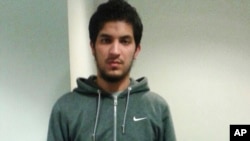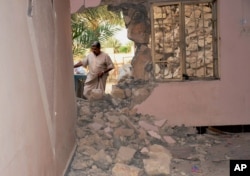Slow progress in the U.S.-led effort to ultimately destroy the Islamic State terror group is being mirrored by equally sluggish progress in the attempt to stem the flow of foreign fighters to the combat zones in Syria and Iraq.
For months now, U.S. military officials have said the Islamic State has been finding ways to replace fighters lost to the now more than 7,000 coalition airstrikes “at the rate we kill them.” And while some of these newcomers are novices to the art of guerrilla warfare and terror, many more are not.
“As a general rule, our observation of ISIS [recruits] is that they tend to be pretty tactically proficient,” one U.S. official told VOA on the condition of anonymity. “A lot of them have significant combat experience.”
The official, who was not authorized to speak about the matter publicly, said that experience has been paying off for the Islamic State in places like Ramadi and Bayji, where IS fighters have been holding off Iraqi forces with a mix of tactical prowess and a steady stream of reinforcements.
Entry points
U.S. officials say part of the problem is that one of the most popular entry points for foreign fighters, the Turkish-Syrian border, remains porous despite increased efforts by Turkey to clamp down.
The result is that, on average, about 1,000 foreign fighters are making their way to Syria each month.
A report released by U.S. lawmakers Wednesday put the number of foreign fighters in Iraq and Syria at nearly 30,000, including 4,500 Westerners and 250 U.S. citizens.
At a United Nations summit in New York Tuesday to discuss the growing terror threat, Secretary General Ban Ki-moon said the UN’s latest data show a 70 percent increase in the number of foreign fighters from more than 100 countries.
U.S. officials worry the recent Russian military build-up in Syria designed to support President Bashar al-Assad, could also expand the pool of would be foreign fighters.
“Many modern terrorist groups are rooted in the legacy of battling the former Soviet Union in Afghanistan,” a U.S. counterterrorism official told VOA. “It would not be surprising if ISIL features the Russian build-up as a tie into their apocalyptic narrative, and to help bridge the generational divide among jihadists with Moscow’s actions in Afghanistan and Syria as bookends.”
U.S. defense officials admit the challenge, especially when it comes to the Islamic State, also known as ISIS or ISIL, is significant.
“They have a very effective social media campaign to attract would-be jihadists,” a senior defense official said. “But as we continue our fight against ISIL and they continue to have setbacks that attraction will wane.”
US effort failing
Others are not nearly as confident.
“We are not only failing, we are losing this war,” retired U.S. General Jack Keane told U.S. lawmakers during a House Foreign Affairs Committee hearing Wednesday. “We have not impacted the ideology or ISIS recruiting.”
Activists working on the ground to prevent the recruitment of foreign fighters say one reason for the struggle to slow extremist recruiting is the global response, itself, often put out in the form of government “action plans.”
“I've been meeting up with Muslim youth from all over Europe and also quite a few from USA,” said Yousef Bartho Assidiq, a former radical from Norway. “They feel that the plan is out of touch with the reality on the ground and it's more like a policy tool for politicians and elected officials.”
Keneshbek Sainazarov, based in Kyrgyzstan with the non-governmental organization Search For Common Ground, said evidence indicates the number of recruits from Central Asia is growing, with extremists increasingly targeting women using a combination of social media and in-person outreach.
Still, he refused to attribute the growth to any one factor.
“Economic difficulties in Russia is contributing to the recruitment significantly,” Sainazarov said. “Punitive measures used by law enforcement and security agencies is another contributor.”
House Homeland Security Committee Chairman Michael McCaul warned the U.S. is not immune to the problem.
“We are losing in this struggle to keep Americans from the battlefield,” he said. "When you have 200,000 ISIS tweets per day going out to thousands of followers in the United States every day to kill, to kill military, to attack military installations, it's really hard to get around that from a security standpoint." Still, officials argue there has been some progress.
Information sharing
INTERPOL, the international police organization, said Wednesday its database of fingerprints and other data needed to help identify foreign fighters has increased to more than 4,000 so-called “identifiers.” Officials said information sharing among member states has also increased, leading to some apprehensions.
Analysts also point to the actions of Sunni Arab countries in the Middle East, some of which had tacitly supported the flow of foreign fighters, seeing it as a chance to take down the Syria’s Shi'ite rulers.
“It’s too early to point to success stories, but the fact that this is much higher up on Arab states’ radars is very clear,” said Daveed Gartenstein-Ross with the Foundation for Defense of Democracies. “There have been measures taken to disallow travel, for example, males of certain age groups, to monitor people who are returnees from the area, and to deal with it from both a criminal justice approach and also from a demobilization slash rehabilitative approach.”












